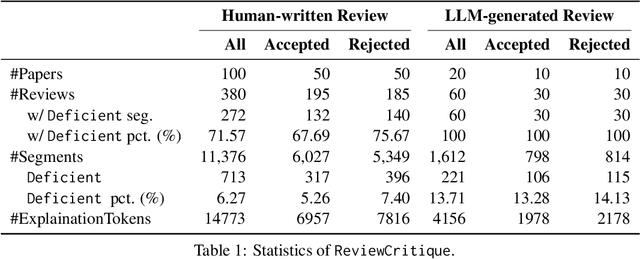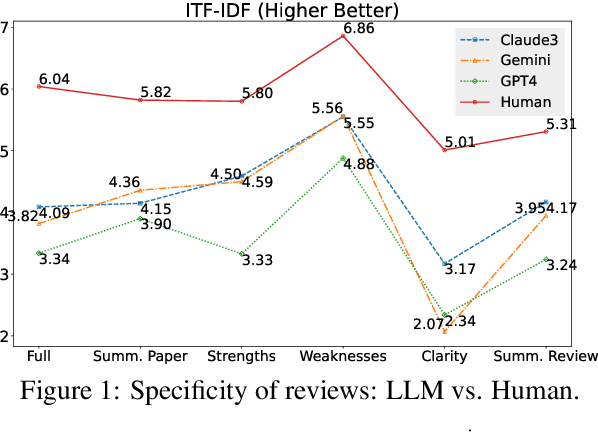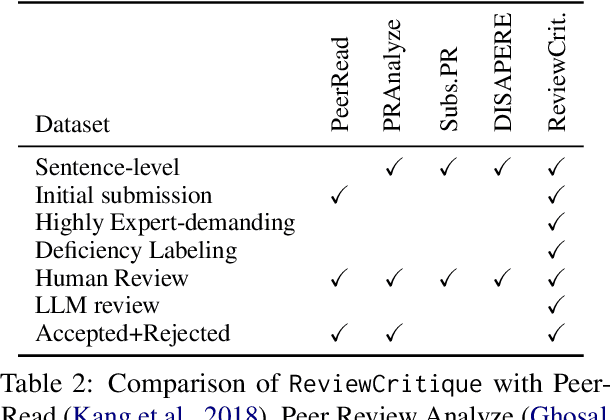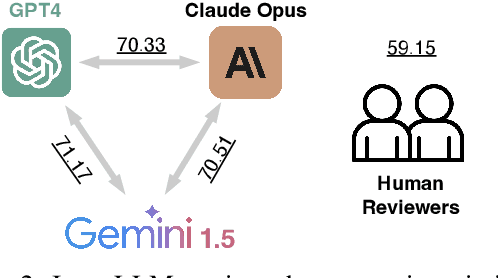Ruohao Guo
OLinear: A Linear Model for Time Series Forecasting in Orthogonally Transformed Domain
May 14, 2025Abstract:This paper presents $\mathbf{OLinear}$, a $\mathbf{linear}$-based multivariate time series forecasting model that operates in an $\mathbf{o}$rthogonally transformed domain. Recent forecasting models typically adopt the temporal forecast (TF) paradigm, which directly encode and decode time series in the time domain. However, the entangled step-wise dependencies in series data can hinder the performance of TF. To address this, some forecasters conduct encoding and decoding in the transformed domain using fixed, dataset-independent bases (e.g., sine and cosine signals in the Fourier transform). In contrast, we utilize $\mathbf{OrthoTrans}$, a data-adaptive transformation based on an orthogonal matrix that diagonalizes the series' temporal Pearson correlation matrix. This approach enables more effective encoding and decoding in the decorrelated feature domain and can serve as a plug-in module to enhance existing forecasters. To enhance the representation learning for multivariate time series, we introduce a customized linear layer, $\mathbf{NormLin}$, which employs a normalized weight matrix to capture multivariate dependencies. Empirically, the NormLin module shows a surprising performance advantage over multi-head self-attention, while requiring nearly half the FLOPs. Extensive experiments on 24 benchmarks and 140 forecasting tasks demonstrate that OLinear consistently achieves state-of-the-art performance with high efficiency. Notably, as a plug-in replacement for self-attention, the NormLin module consistently enhances Transformer-based forecasters. The code and datasets are available at https://anonymous.4open.science/r/OLinear
How to Protect Yourself from 5G Radiation? Investigating LLM Responses to Implicit Misinformation
Mar 12, 2025Abstract:As Large Language Models (LLMs) are widely deployed in diverse scenarios, the extent to which they could tacitly spread misinformation emerges as a critical safety concern. Current research primarily evaluates LLMs on explicit false statements, overlooking how misinformation often manifests subtly as unchallenged premises in real-world user interactions. We curated ECHOMIST, the first comprehensive benchmark for implicit misinformation, where the misinformed assumptions are embedded in a user query to LLMs. ECHOMIST is based on rigorous selection criteria and carefully curated data from diverse sources, including real-world human-AI conversations and social media interactions. We also introduce a new evaluation metric to measure whether LLMs can recognize and counter false information rather than amplify users' misconceptions. Through an extensive empirical study on a wide range of LLMs, including GPT-4, Claude, and Llama, we find that current models perform alarmingly poorly on this task, often failing to detect false premises and generating misleading explanations. Our findings underscore the critical need for an increased focus on implicit misinformation in LLM safety research.
Normal-NeRF: Ambiguity-Robust Normal Estimation for Highly Reflective Scenes
Jan 16, 2025Abstract:Neural Radiance Fields (NeRF) often struggle with reconstructing and rendering highly reflective scenes. Recent advancements have developed various reflection-aware appearance models to enhance NeRF's capability to render specular reflections. However, the robust reconstruction of highly reflective scenes is still hindered by the inherent shape ambiguity on specular surfaces. Existing methods typically rely on additional geometry priors to regularize the shape prediction, but this can lead to oversmoothed geometry in complex scenes. Observing the critical role of surface normals in parameterizing reflections, we introduce a transmittance-gradient-based normal estimation technique that remains robust even under ambiguous shape conditions. Furthermore, we propose a dual activated densities module that effectively bridges the gap between smooth surface normals and sharp object boundaries. Combined with a reflection-aware appearance model, our proposed method achieves robust reconstruction and high-fidelity rendering of scenes featuring both highly specular reflections and intricate geometric structures. Extensive experiments demonstrate that our method outperforms existing state-of-the-art methods on various datasets.
Towards Open-Vocabulary Audio-Visual Event Localization
Nov 18, 2024Abstract:The Audio-Visual Event Localization (AVEL) task aims to temporally locate and classify video events that are both audible and visible. Most research in this field assumes a closed-set setting, which restricts these models' ability to handle test data containing event categories absent (unseen) during training. Recently, a few studies have explored AVEL in an open-set setting, enabling the recognition of unseen events as ``unknown'', but without providing category-specific semantics. In this paper, we advance the field by introducing the Open-Vocabulary Audio-Visual Event Localization (OV-AVEL) problem, which requires localizing audio-visual events and predicting explicit categories for both seen and unseen data at inference. To address this new task, we propose the OV-AVEBench dataset, comprising 24,800 videos across 67 real-life audio-visual scenes (seen:unseen = 46:21), each with manual segment-level annotation. We also establish three evaluation metrics for this task. Moreover, we investigate two baseline approaches, one training-free and one using a further fine-tuning paradigm. Specifically, we utilize the unified multimodal space from the pretrained ImageBind model to extract audio, visual, and textual (event classes) features. The training-free baseline then determines predictions by comparing the consistency of audio-text and visual-text feature similarities. The fine-tuning baseline incorporates lightweight temporal layers to encode temporal relations within the audio and visual modalities, using OV-AVEBench training data for model fine-tuning. We evaluate these baselines on the proposed OV-AVEBench dataset and discuss potential directions for future work in this new field.
Open-Vocabulary Audio-Visual Semantic Segmentation
Jul 31, 2024Abstract:Audio-visual semantic segmentation (AVSS) aims to segment and classify sounding objects in videos with acoustic cues. However, most approaches operate on the close-set assumption and only identify pre-defined categories from training data, lacking the generalization ability to detect novel categories in practical applications. In this paper, we introduce a new task: open-vocabulary audio-visual semantic segmentation, extending AVSS task to open-world scenarios beyond the annotated label space. This is a more challenging task that requires recognizing all categories, even those that have never been seen nor heard during training. Moreover, we propose the first open-vocabulary AVSS framework, OV-AVSS, which mainly consists of two parts: 1) a universal sound source localization module to perform audio-visual fusion and locate all potential sounding objects and 2) an open-vocabulary classification module to predict categories with the help of the prior knowledge from large-scale pre-trained vision-language models. To properly evaluate the open-vocabulary AVSS, we split zero-shot training and testing subsets based on the AVSBench-semantic benchmark, namely AVSBench-OV. Extensive experiments demonstrate the strong segmentation and zero-shot generalization ability of our model on all categories. On the AVSBench-OV dataset, OV-AVSS achieves 55.43% mIoU on base categories and 29.14% mIoU on novel categories, exceeding the state-of-the-art zero-shot method by 41.88%/20.61% and open-vocabulary method by 10.2%/11.6%. The code is available at https://github.com/ruohaoguo/ovavss.
LLMs Assist NLP Researchers: Critique Paper (Meta-)Reviewing
Jun 25, 2024



Abstract:This work is motivated by two key trends. On one hand, large language models (LLMs) have shown remarkable versatility in various generative tasks such as writing, drawing, and question answering, significantly reducing the time required for many routine tasks. On the other hand, researchers, whose work is not only time-consuming but also highly expertise-demanding, face increasing challenges as they have to spend more time reading, writing, and reviewing papers. This raises the question: how can LLMs potentially assist researchers in alleviating their heavy workload? This study focuses on the topic of LLMs assist NLP Researchers, particularly examining the effectiveness of LLM in assisting paper (meta-)reviewing and its recognizability. To address this, we constructed the ReviewCritique dataset, which includes two types of information: (i) NLP papers (initial submissions rather than camera-ready) with both human-written and LLM-generated reviews, and (ii) each review comes with "deficiency" labels and corresponding explanations for individual segments, annotated by experts. Using ReviewCritique, this study explores two threads of research questions: (i) "LLMs as Reviewers", how do reviews generated by LLMs compare with those written by humans in terms of quality and distinguishability? (ii) "LLMs as Metareviewers", how effectively can LLMs identify potential issues, such as Deficient or unprofessional review segments, within individual paper reviews? To our knowledge, this is the first work to provide such a comprehensive analysis.
Sub-Adjacent Transformer: Improving Time Series Anomaly Detection with Reconstruction Error from Sub-Adjacent Neighborhoods
Apr 27, 2024Abstract:In this paper, we present the Sub-Adjacent Transformer with a novel attention mechanism for unsupervised time series anomaly detection. Unlike previous approaches that rely on all the points within some neighborhood for time point reconstruction, our method restricts the attention to regions not immediately adjacent to the target points, termed sub-adjacent neighborhoods. Our key observation is that owing to the rarity of anomalies, they typically exhibit more pronounced differences from their sub-adjacent neighborhoods than from their immediate vicinities. By focusing the attention on the sub-adjacent areas, we make the reconstruction of anomalies more challenging, thereby enhancing their detectability. Technically, our approach concentrates attention on the non-diagonal areas of the attention matrix by enlarging the corresponding elements in the training stage. To facilitate the implementation of the desired attention matrix pattern, we adopt linear attention because of its flexibility and adaptability. Moreover, a learnable mapping function is proposed to improve the performance of linear attention. Empirically, the Sub-Adjacent Transformer achieves state-of-the-art performance across six real-world anomaly detection benchmarks, covering diverse fields such as server monitoring, space exploration, and water treatment.
Audio-Visual Instance Segmentation
Oct 28, 2023Abstract:In this paper, we propose a new multi-modal task, namely audio-visual instance segmentation (AVIS), in which the goal is to identify, segment, and track individual sounding object instances in audible videos, simultaneously. To our knowledge, it is the first time that instance segmentation has been extended into the audio-visual domain. To better facilitate this research, we construct the first audio-visual instance segmentation benchmark (AVISeg). Specifically, AVISeg consists of 1,258 videos with an average duration of 62.6 seconds from YouTube and public audio-visual datasets, where 117 videos have been annotated by using an interactive semi-automatic labeling tool based on the Segment Anything Model (SAM). In addition, we present a simple baseline model for the AVIS task. Our new model introduces an audio branch and a cross-modal fusion module to Mask2Former to locate all sounding objects. Finally, we evaluate the proposed method using two backbones on AVISeg. We believe that AVIS will inspire the community towards a more comprehensive multi-modal understanding.
CM-PIE: Cross-modal perception for interactive-enhanced audio-visual video parsing
Oct 11, 2023Abstract:Audio-visual video parsing is the task of categorizing a video at the segment level with weak labels, and predicting them as audible or visible events. Recent methods for this task leverage the attention mechanism to capture the semantic correlations among the whole video across the audio-visual modalities. However, these approaches have overlooked the importance of individual segments within a video and the relationship among them, and tend to rely on a single modality when learning features. In this paper, we propose a novel interactive-enhanced cross-modal perception method~(CM-PIE), which can learn fine-grained features by applying a segment-based attention module. Furthermore, a cross-modal aggregation block is introduced to jointly optimize the semantic representation of audio and visual signals by enhancing inter-modal interactions. The experimental results show that our model offers improved parsing performance on the Look, Listen, and Parse dataset compared to other methods.
Improved Instruction Ordering in Recipe-Grounded Conversation
May 26, 2023Abstract:In this paper, we study the task of instructional dialogue and focus on the cooking domain. Analyzing the generated output of the GPT-J model, we reveal that the primary challenge for a recipe-grounded dialog system is how to provide the instructions in the correct order. We hypothesize that this is due to the model's lack of understanding of user intent and inability to track the instruction state (i.e., which step was last instructed). Therefore, we propose to explore two auxiliary subtasks, namely User Intent Detection and Instruction State Tracking, to support Response Generation with improved instruction grounding. Experimenting with our newly collected dataset, ChattyChef, shows that incorporating user intent and instruction state information helps the response generation model mitigate the incorrect order issue. Furthermore, to investigate whether ChatGPT has completely solved this task, we analyze its outputs and find that it also makes mistakes (10.7% of the responses), about half of which are out-of-order instructions. We will release ChattyChef to facilitate further research in this area at: https://github.com/octaviaguo/ChattyChef.
 Add to Chrome
Add to Chrome Add to Firefox
Add to Firefox Add to Edge
Add to Edge